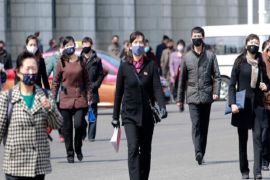The PML-N government has failed to meet all major macroeconomic and social targets it set in the 11th Five-Year Plan, but progress was made across all sectors, reveals an internal assessment of the Planning Commission.
The ruling party failed to achieve targets even in areas that were its foremost priority like electricity generation and construction of roads. The Planning Commission evaluated the implementation of the 11th Five-Year Plan (2013-18) as part of its preparations for the next strategy (2018-2023)
Average gross domestic product growth rate during the first four years remained at 4.4% as against the target of 5.4%.
Average growth in the agriculture sector was 2.1% against the target of 3.5%. The average industrial output was 5.1% during the first four years as against the requirement of 6.3%. The large-scale manufacturing grew at an average pace of 4.3% against the target of 6%. Similarly, the services sector grew at an average pace of 5% against the Five-Year Plan target of 5.8%.
The federal government had presented the 11th Five-Year Plan (2013-2018) in the backdrop of “multiple challenges on the economic, security and development fronts” the country was facing. The Planning Commission has admitted that stagnant exports, widening current account deficit, low savings and investments still remain key challenges to sustainable economic development.
Also, there were gaps in governance across sectors and regional disparities remain in development. The Commission also noted in its assessment that the ease of doing business indicator could not be improved and social service delivery remained poor.
The PML-N government’s poorest performance was in areas that required structural improvements to correct past imbalances. Under the Five-Year Plan, the PML-N government had set a target to enhance Investment-to-GDP ratio to 22.8% by 2017-18. However, the ratio was only 15.8% by the end of the last fiscal year and for this year the government has set a target of 17.2%.
Private investment also fell far below the target of 16.7% despite the bonanza of the China-Pakistan Economic Corridor.
There was a similar situation in yet another critical area of national savings to GDP. Against the Five-Year target of 21.3%, national savings stood at 13.1% by the end of the last fiscal year, which was even worse than the 2013 ratio of 13.9%.
Exports had been targeted to increase to $29.5 billion by the fiscal year 2017-18 under the plan. At the end of the fourth year, exports grew to only $20.4 billion and for this fiscal year the government has set a $23.1-billion target.
Similarly, imports remained far higher than the target of restricting them to $51.1 billion. The government closed last fiscal year at an import bill of $53.5 billion.
The government had targeted to restrict the current account deficit to 1.2% at the end of the fifth year of the Plan, but estimates suggest that this year again the current account deficit will be more than 4% of GDP.
Under the Five-Year Plan, fiscal deficit had to be brought down to 3.5% of GDP – an area where the government also failed. Even conservative estimates put this year’s estimated budget deficit at 5.5% of GDP, which will require the government to borrow more.
Under the Five-Year Plan, the government had targeted to increase overall power generation capacity to 37,272 megawatts. But the Planning Commission’s assessment showed that the total power generation would be 33,000MW by June 2018. However, this generation will be sufficient to meet the current energy needs of the country. The share of green energy in total power generation increased from 0.5% to 5%. But it was below the target of 7%.
The plan sought to increase expenditure under the public sector development programme (PSDP) from 3.9% of GDP in 2012-13 to 4.6% by 2017-18. In reality, the PSDP allocation for this fiscal year is equal to only 2.8% of GDP.
Although the situation was better than in 2013, the government could not perform well in the social sector. Moreover, the responsibility of the social sector is now of the provinces after the 18th Amendment in the Constitution. Against the target of reducing maternal mortality rate to 140 per 100,000 women, the ratio remained at 170, which was still better than five years ago. The infant mortality rate improved from 74 to 66 per 1,000 infants but it was far higher than the target of 40.
Similarly, the child mortality rate remained at 81 per 1,000 kids as against the target of 52.
Access to clean drinking water was 91% of the total population, up from 2013 level but lower than the 93% target. The government also missed the target of increasing number of universities to 302, as the total universities remained at 186. About 29 more universities were set up in the past five years. The net primary enrollment ratio was supposed to be 100% under the Five-Year Plan, which also remained below target. The literacy rate had to be 88% but the last survey results showed it at 58%.







